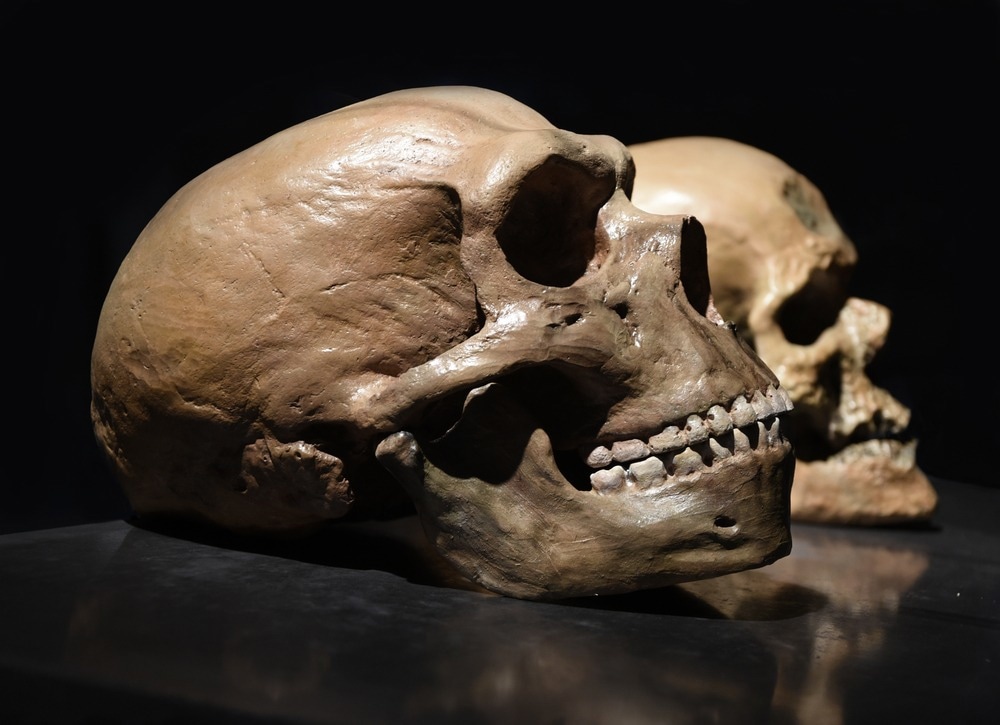According to a recent study co-led by UCL researchers, those who contain three gene variations acquired from Neanderthals are more susceptible to specific types of pain.
 Image Credit: Petr Student/Shutterstock.com
Image Credit: Petr Student/Shutterstock.com
The results, which were published in Communications Biology, represent the most recent evidence of how modern humans’ genetic makeup has been affected by past interbreeding with Neanderthals.
The SCN9A gene, which is associated with sensory neurons, is linked in three so-called Neanderthal variations that increase sensitivity to pain from skin pricking following prior exposure to mustard oil, according to the study’s findings.
Previous studies have discovered three polymorphisms in the SCN9A gene, known as M932L, V991L, and D1908G, in sequenced Neanderthal genomes and have shown that those who possess all three variants had higher pain thresholds.
A multinational team led by UCL, Aix-Marseille University, University of Toulouse, Open University, Fudan University, and Oxford University, and supported in part by Wellcome, assessed the pain thresholds of 1,963 Colombians in reaction to a variety of stimuli.
The SCN9A gene encodes a sodium channel, which is highly expressed in sensory neurons that detect signals from injured tissue. The D1908G variation of the gene was detected in around 20% of the chromosomes in this group, and approximately 30% of the chromosomes containing this variant also had the M932L and V991L variants.
The scientists discovered that the three variations were linked to a decreased pain threshold in response to skin pricking following prior mustard oil exposure but not to heat or pressure. Furthermore, harboring all three variations was linked to higher pain sensitivity than holding only one.
The authors discovered that the three Neanderthal variants were more common in populations with higher proportions of Native American ancestry, such as the Peruvian population, where the average proportion of Native American ancestry was 66% when they examined the genomic region including SCN9A using genetic data from 5,971 people from Brazil, Chile, Colombia, Mexico, and Peru.
The scientists speculate that Neanderthal variations may sensitize sensory neurons by changing the threshold at which a nerve impulse is produced. They hypothesize that the mutations may be more prevalent among groups with a larger share of Native American ancestry as a result of random chance and population bottlenecks that occurred during the Americas’ early settlement.
Although acute pain might limit behavior and prevent future harm, experts believe that further research is needed to understand if having these variations and being more sensitive to pain was helpful throughout human evolution.
A previous study by co-corresponding author Dr. Kaustubh Adhikari (UCL Genetics, Evolution & Environment and The Open University) demonstrated that humans received some genetic material from Neanderthals, which influenced the shape of human noses.
In the last 15 years, since the Neanderthal genome was first sequenced, we have been learning more and more about what we have inherited from them as a result of interbreeding tens of thousands of years ago. Pain sensitivity is an important survival trait that enables us to avoid painful things that could cause us serious harm. Our findings suggest that Neanderthals may have been more sensitive to certain types of pain, but further research is needed for us to understand why that is the case, and whether these specific genetic variants were evolutionarily advantageous.”
Dr. Kaustubh Adhikari, Study Co-Corresponding Author and Statistical Geneticist, University College London
Study first author Dr. Pierre Faux (Aix-Marseille University and University of Toulouse) added, “We have shown how variation in our genetic code can alter how we perceive pain, including genes that modern humans acquired from the Neanderthals. But genes are just one of many factors, including environment, past experience, and psychological factors, which influence pain.”
Source:
Journal reference:
Faux, P., et al. (2023). Neanderthal introgression in SCN9A impacts mechanical pain sensitivity. Communications Biology. doi.org/10.1038/s42003-023-05286-z